9 Four-Season Trees That Will Steal The Show All Year Long
Every tree contributes its own unique beauty to the landscape. But if you want to make a stunning display throughout the year, choose four-season trees that will delight in every month.
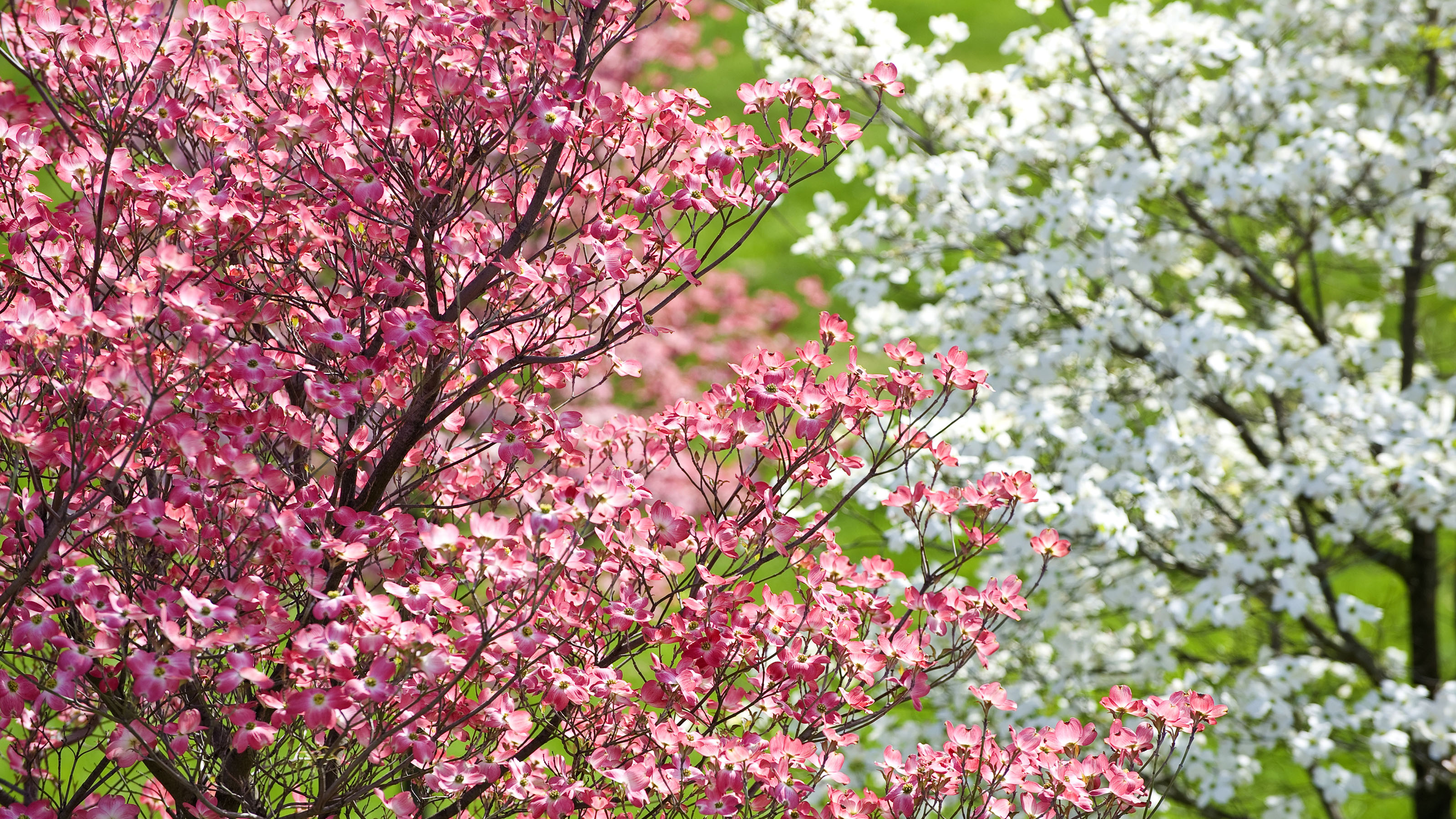

When choosing trees for your yard, consider the interest they will offer throughout the year. Four-season trees have aesthetic appeal in every month, making them invaluable landscape features.
All trees offer interest in at least two seasons – whether the spectacle of blossom from spring flowering trees; fruit trees laden with edible delights in the summer; a stunning show of golden to red fall leaves; or trees with berries or interesting bark in winter.
However, to create a four-season garden, you need to choose trees that make a display at every time of year.
If you have a small yard, it is even more important to include one of these versatile varieties, so you can benefit from a showpiece tree throughout the seasons.
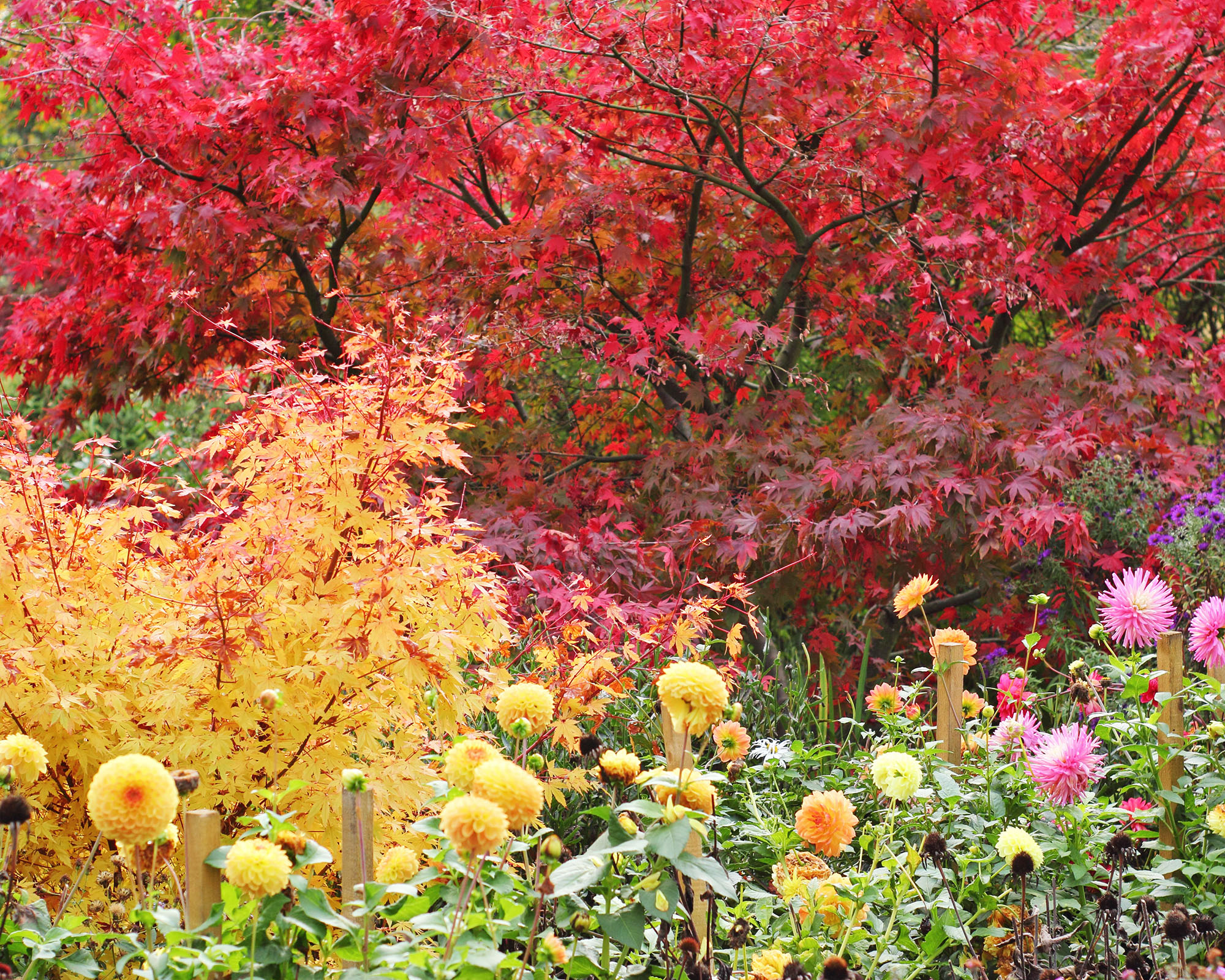
BEST FOUR-SEASON TREES FOR YEAR-ROUND INTEREST
This expert-curated selection of four-season trees has options for gardeners across most of the country. However, no one tree is suitable for every situation.
Before planting trees, it’s essential to ensure they are compatible with your USDA planting zone, soil type, site conditions, and space available. Always check the mature size of any trees you plant, to ensure they are a good size for your garden in the long term.
You want your new tree to last for years – perhaps for generations – and it needs to be well-suited to the growing environment to thrive.
Sign up for the Gardening Know How newsletter today and receive a free copy of our e-book "How to Grow Delicious Tomatoes".
1. Hawthorn
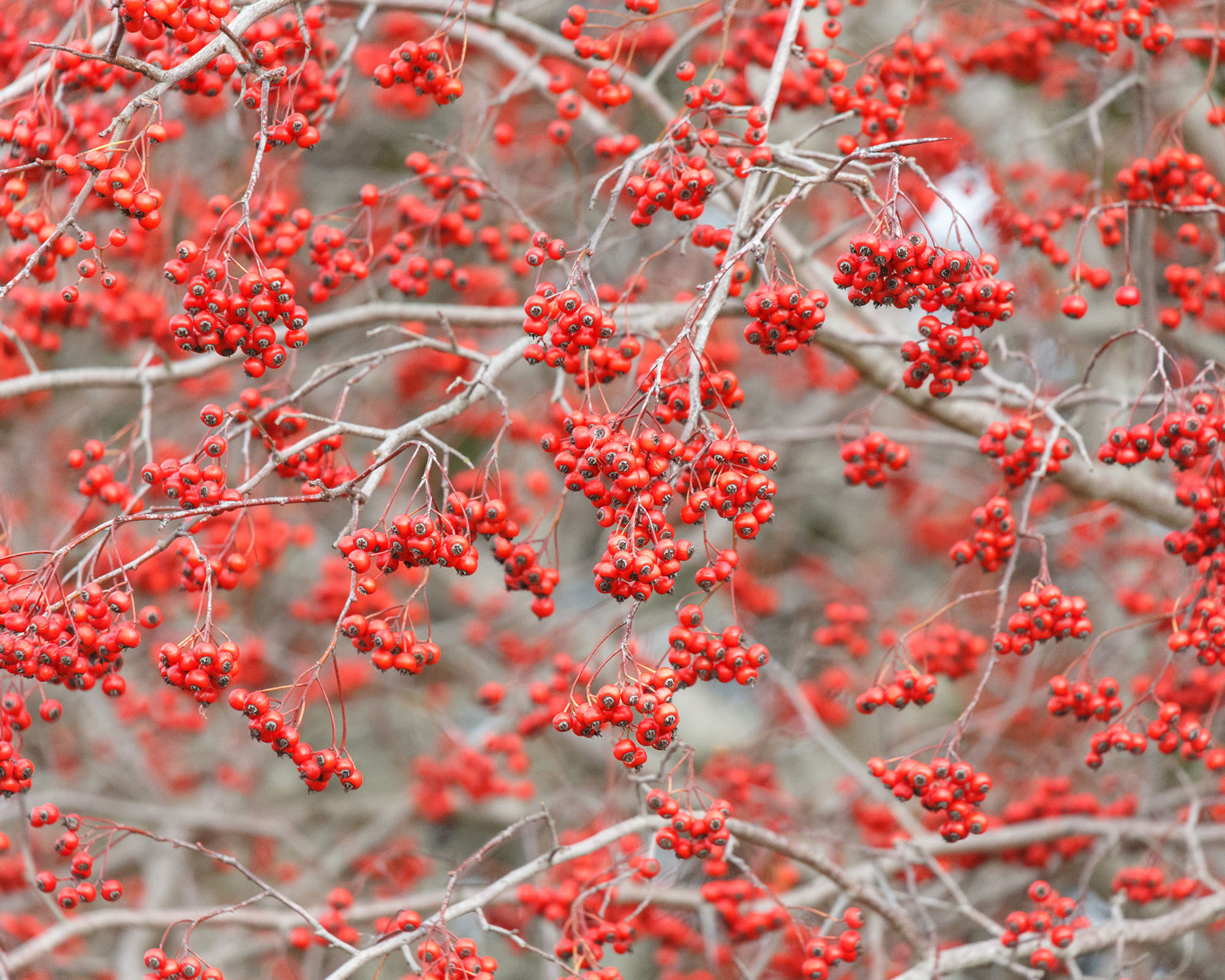
“The native green hawthorn (Crataegus viridis) is a medium-sized tree that has it all – from fragrant white spring flowers to lovely lobed leaves that turn purple in fall,” says Teo Spengler, gardening writer and docent at the San Francisco Botanical Garden.
“The fruits are bright red and hang on the tree through the winter. The exfoliating bark is exceptionally lovely.”
Hawthorn is a low-maintenance tree, requiring only light pruning. It thrives in dry to medium well-drained soil in full sun.
You can grow hawthorn in zones 3 to 9, and should expect it to reach 25 to 35ft (8 to 9m) tall with a similar canopy size.
Another type of hawthorn tree that is slightly more compact is the Washington hawthorn (Crataegus phaenopyrum), which can be grown in zones 4 to 8.
It has stunning foliage color – from reddish purple in the spring, to dark green, before turning shades of orange, scarlet or purple in the fall.
2. Seven Son Flower
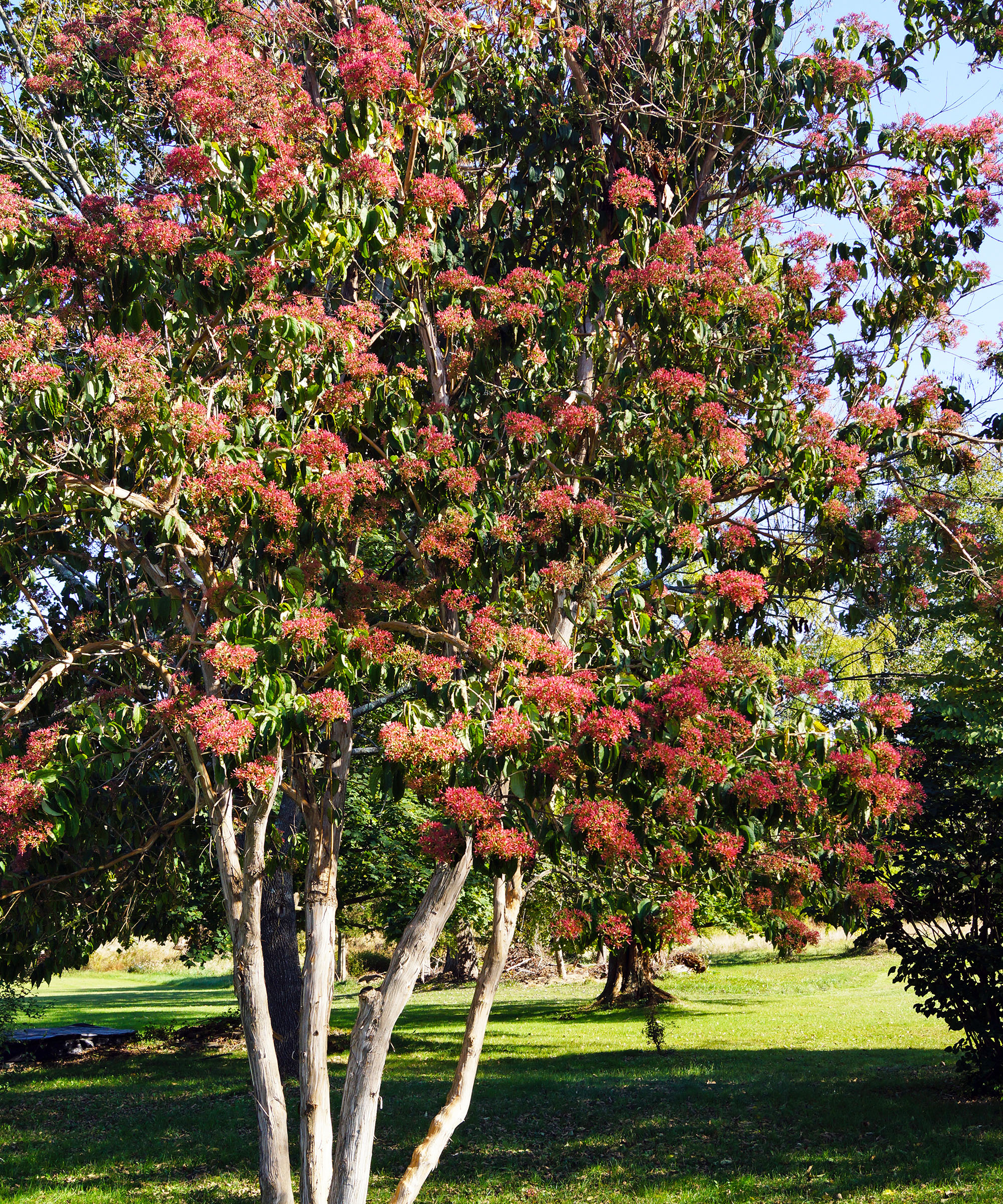
“Seven son flower (Heptacodium micinoides) is a fantastic four-season tree that has only recently begun to gain popularity in the US,” says Ali McEnhill, owner of sustainable New York nursery, The Old Dairy Nursery & Gardens.
“This fountain-shaped tree is one of the few that blooms in late summer to early fall, and pollinators go crazy for it.
“The large clusters of white flowers are followed by masses of gorgeous reddish-pink seeds, which look like flowers.
“While it has no appreciable fall foliage color, the colorful seed structures and peeling, shaggy bark more than make up for it.”
Seven son flower is drought tolerant and extraordinarily easy to grow in most conditions, but it performs best in moist soils with full sun.
“In my opinion, it looks best pruned as a multi-stemmed tree, but it can also be grown as a large shrub,” adds Ali.
You can grow seven son flower in hardiness zones 5 to 9. It has a height of 15 to 20ft (4.5 to 6m), and spread of 8 to 10ft (2 to 3m).
3. Sargent cherry
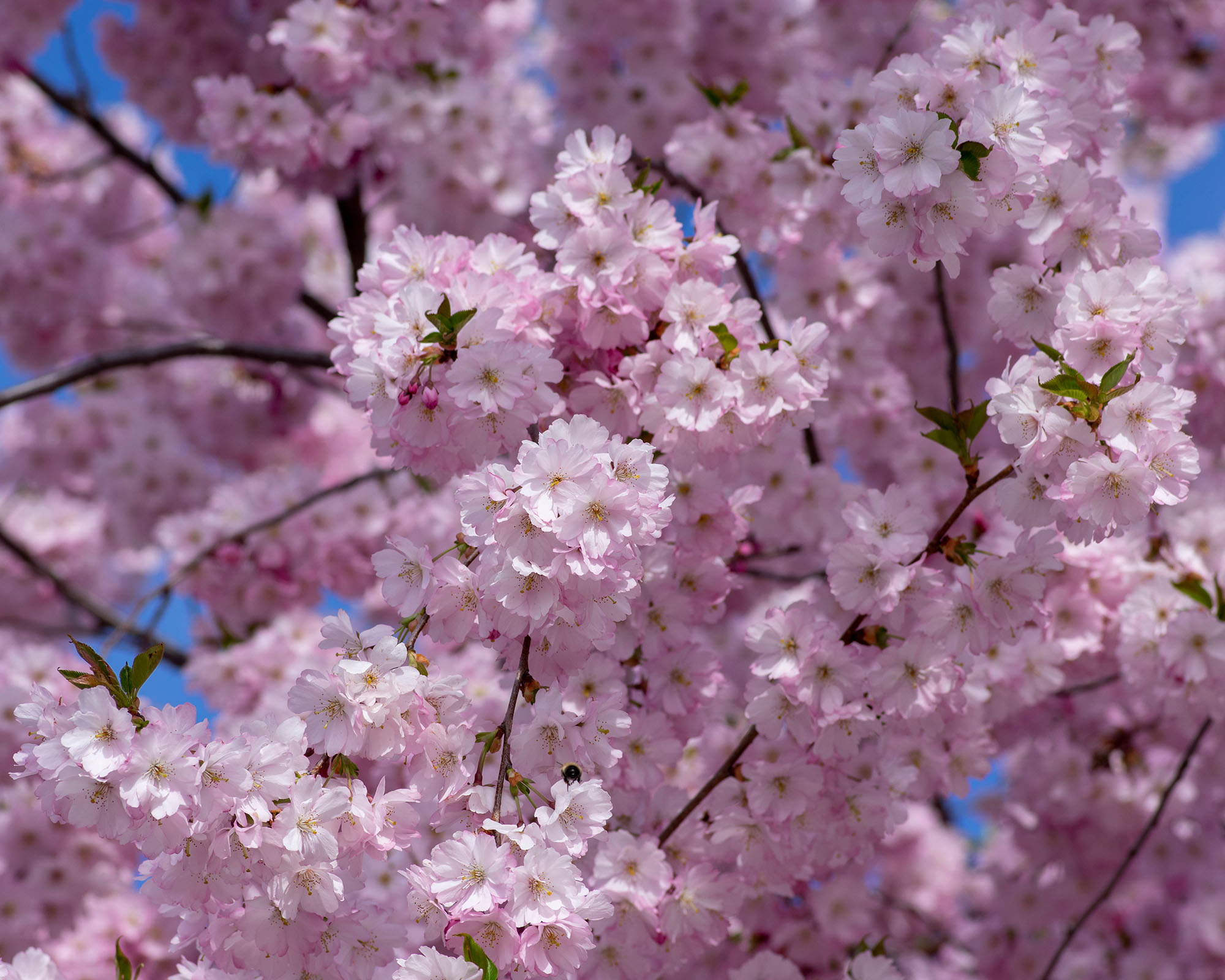
“Cherry trees are not always thought of as interesting year-round, but Sargent cherry (Prunus sargentii) froths over with pink spring flowers that turn into dark cherries in summer,’ says Teo Spengler.
“The foliage changes from green to scarlet in fall, and in winter the gorgeous bark is the star – the color of highly polished mahogany.”
Sargent cherry performs best in full sun in moist but well-drained soils. It has a mature height and canopy spread of 20 to 30ft (6 to 7m). You can grow it in zones 4 to 8.
4. Flowering dogwood
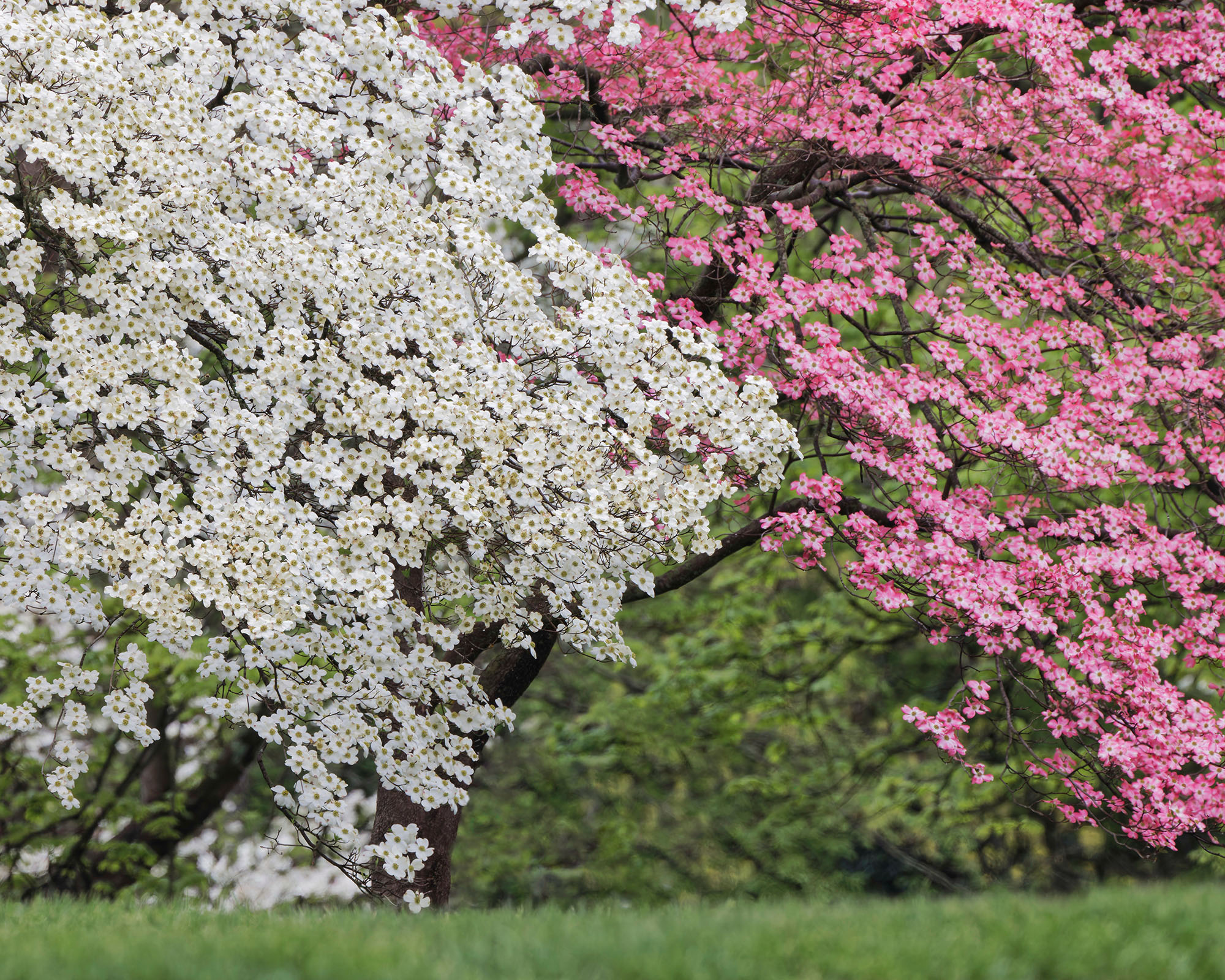
Flowering dogwoods are stunning, versatile four-season trees that are also easy to look after.
“In spring, flowering dogwood will be covered in masses of flowers with their beautiful petal-like bracts,” says Fern Berg, founder of resource portal Tree Vitalize.
“In summer, the green foliage provides welcome shade before transitioning to vibrant fall colors and finally shedding, leaving the distinctive branching pattern of the dogwood exposed and providing interest during winter.
“To add to the appeal, flowering dogwoods develop an abundance of orange-red or bright red berries in late summer which can persist into winter, providing a valuable food source for birds and wildlife.
Flowering dogwoods are compact trees that will grow up to 30ft (9m) depending on the variety and are well suited to growing in USDA zones 5 to 9 – however, there are some options available for zones 2 to 4 and zone 10.
The trees thrive in full to partial sun, in neutral to acid soil that is moist but well-draining. While low-maintenance once established, flowering dogwood will initially need regular watering.
5. Japanese Stewartia
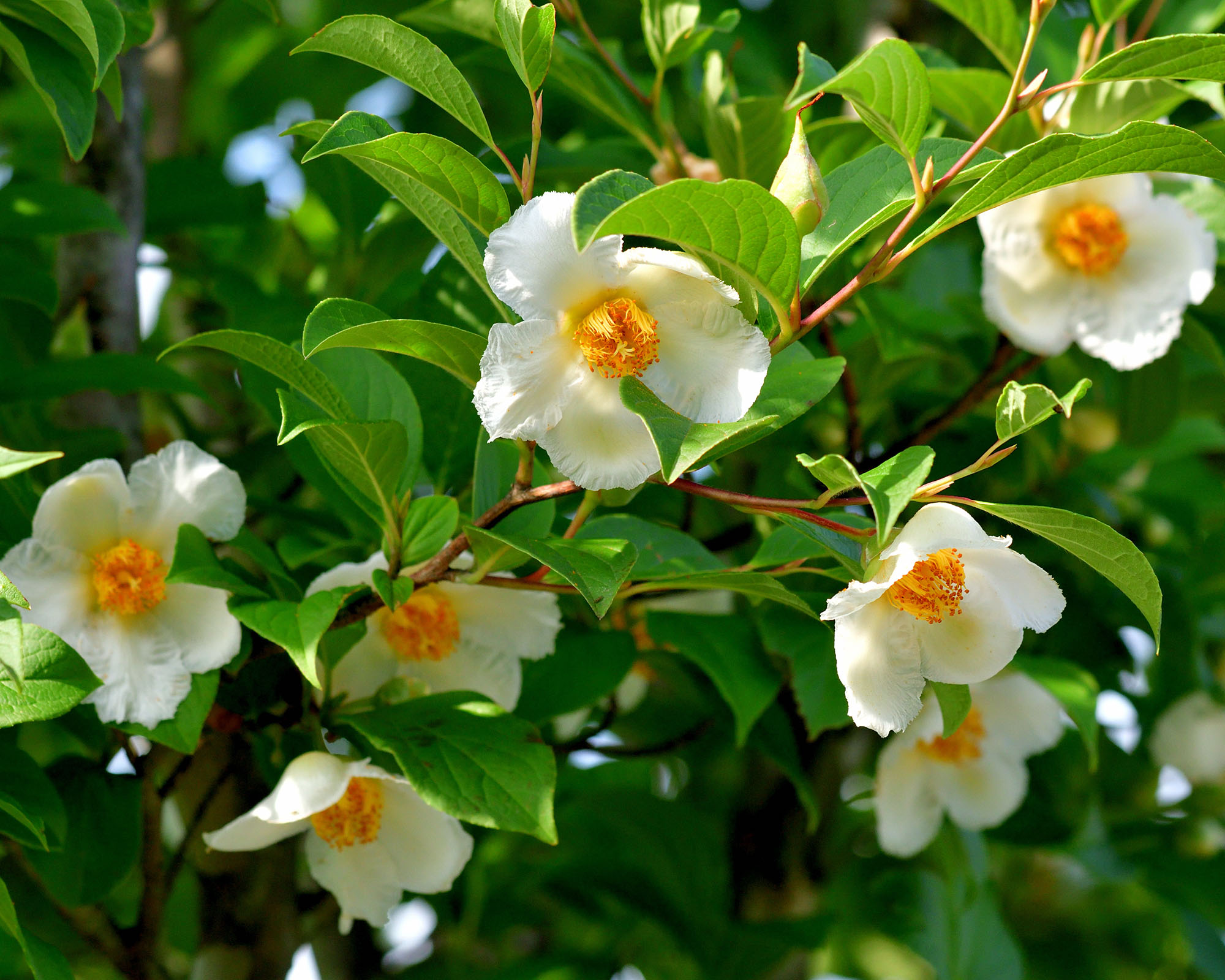
“Japanese Stewartia (Stewartia pseudocamellia) is one of the best landscape trees on the market,” says Ali McEnhill.
“It is easy to grow in most conditions and beautiful through all four seasons. Light green foliage emerges in spring and is followed by large, white camelia-like flowers in summer.
“Fall brings bold red and orange foliage. Finally, the leaves drop and expose the exfoliating bark on mature growth; new growth shines a beautiful deep red all winter long.”
You can grow Japanese Stewartia in USDA zones 5 to 8. It has a mature height of 20 to 40ft (6 to 12m) and a spread of 15 to 30ft (4.5 to 9m), making it a good mid-sized choice.
6. River Birch
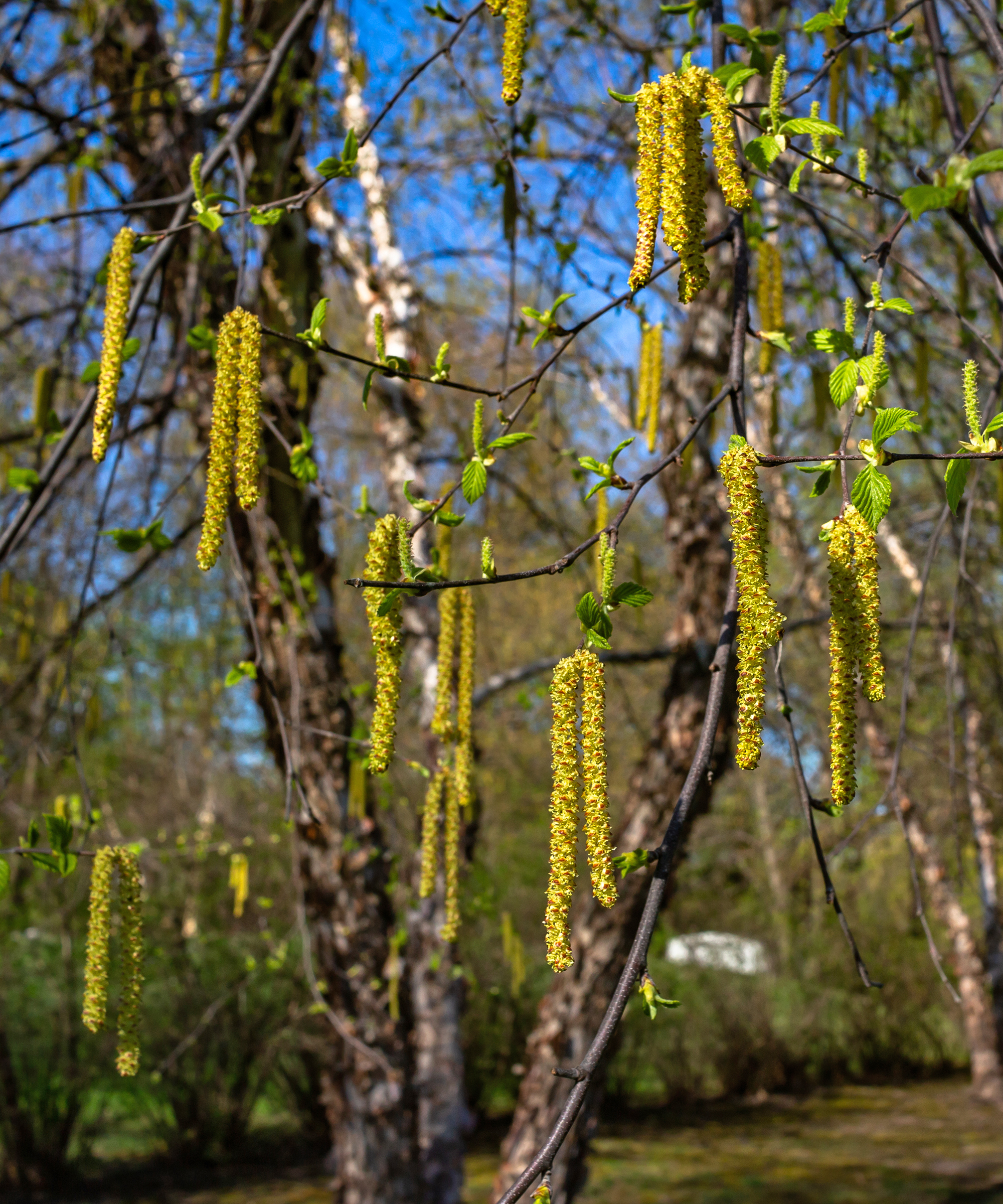
“The easy-to-grow river birch (Betula nigra) produces lovely foliage in spring and summer and the leaves turn bright yellow in fall,” says Teo Spengler.
“However, many think it's most beautiful in winter. Its gorgeous bark exfoliates in a spectacular range of brown, salmon, peach, orange and lavender hues.”
River birch is a very hardy, fast-growing native tree that will grow in waterlogged to dry soils.
It has a mature height of 40 to 70ft (12 to 21m) and canopy spread of 40 to 60ft (12 to 18m). You can expect to be able to successfully grow river birch in zones 4 to 9.
7. Cornelian cherry
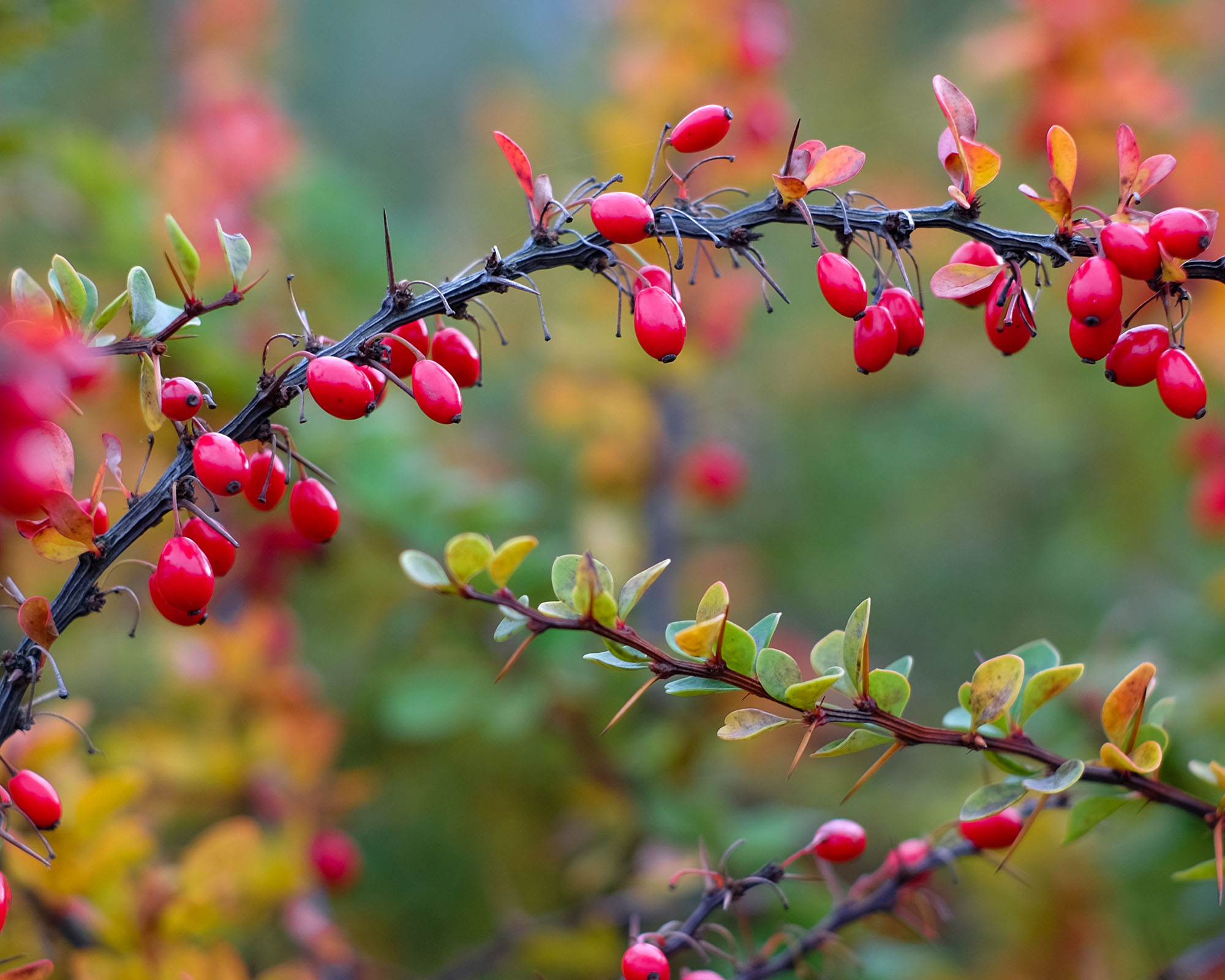
“Cornelian cherry (Cornus mas) is one of the most stunning four-season trees,” says Ali McEnhill. “It is often the first dogwood (for it is a dogwood, not a cherry) to burst into bloom.”
“The individual yellow flowers are tiny, but they are borne in such profusion that they light up the early spring landscape. New leaves emerge once the blooms have faded.
“In mid-summer, large red fruits appear. These are edible, but I prefer to leave them to the birds.
“The dark green leaves deepen to purple as fall approaches. After the leaves drop, the wonderful exfoliating bark is revealed.”
Cornelian cherry is a tough tree that is easy to grow in almost any yard, but it prefers moist, organically rich soils.
“It is incredibly versatile: it can be grown as a large shrub, a specimen tree, or used as a hedge. It is deer resistant and has few pests or diseases,” adds Ali.
Cornelian cherry has a height of 15 to 25ft (4.5 to 8m) and a spread of 15 to 20ft (4.5 to 6m). You can grow it in zones 4 to 8.
8. Coral Bark Japanese Maple
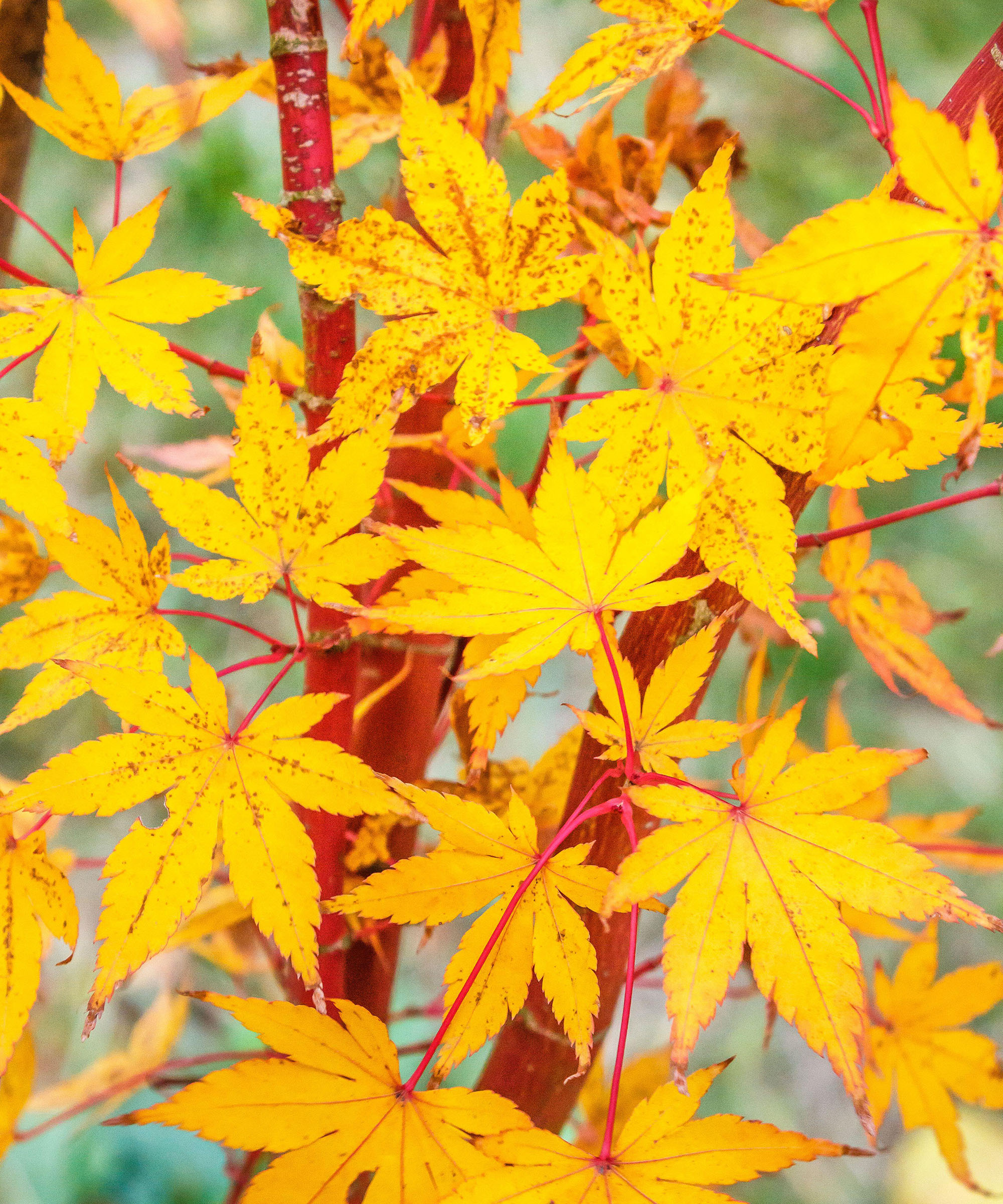
“If you're only going to have one Japanese maple tree in your garden, consider coral bark Japanese maple (Acer palmatum 'Sango-kaku'), with its palm-shaped foliage and distinctive brilliant pink or red bark,” says Teo.
“This makes for winter interest – but not before the leaves turn fiery in fall.”
In the spring, the tree’s palmate leaves open in a bright, lime green or chartreuse color. As spring turns to summer, these leaves turn a deeper green.
The coral bark’s winter color will be deeper the more sunlight it receives. However, Japanese maples benefit from dappled shade in the afternoon – particularly in warmer areas. This makes them perfect for planting underneath the canopy of taller trees.
Trees have a mature height of 20 to 25ft (6 to 8m) and a spread of 15 to 20ft (5 to 6m).
You can grow coral bark Japanese maple in zones 5 to 8.
9. Serviceberry

“Small trees or shrubs, serviceberries (Amelanchier lamarckii) delight with their clusters of fragrant white flowers in spring, followed by dark green leaves.” says Teo
“The edible blueberry-like fruits mature slowly to dark reddish-purple. In autumn, the leaves turn shades of yellow, orange, and red before dropping to expose the smooth bark that shines in winter light.”
Serviceberries should be planted in lighter soil that is moist, but not overly wet, in light shade to full sun – although you will get better fruit in full sun.
Trees have a medium growth to 15 to 25ft (4.5 to 8m) tall, with a similar canopy width. You can plant serviceberry in zones 2 to 9.

Melanie is an experienced gardener and has worked in homes and gardens media for over 20 years. She previously served as Editor on Period Living magazine, and worked for Homes & Gardens, Gardening Etc, Real Homes, and Homebuilding & Renovating. Melanie has spent the last few years transforming her own garden, which is constantly evolving as a work in progress. She is also a passionate organic home grower, having experimented with almost every type of vegetable at some point. In her home, Melanie tends to an extensive houseplant collection and is particularly fond of orchids.